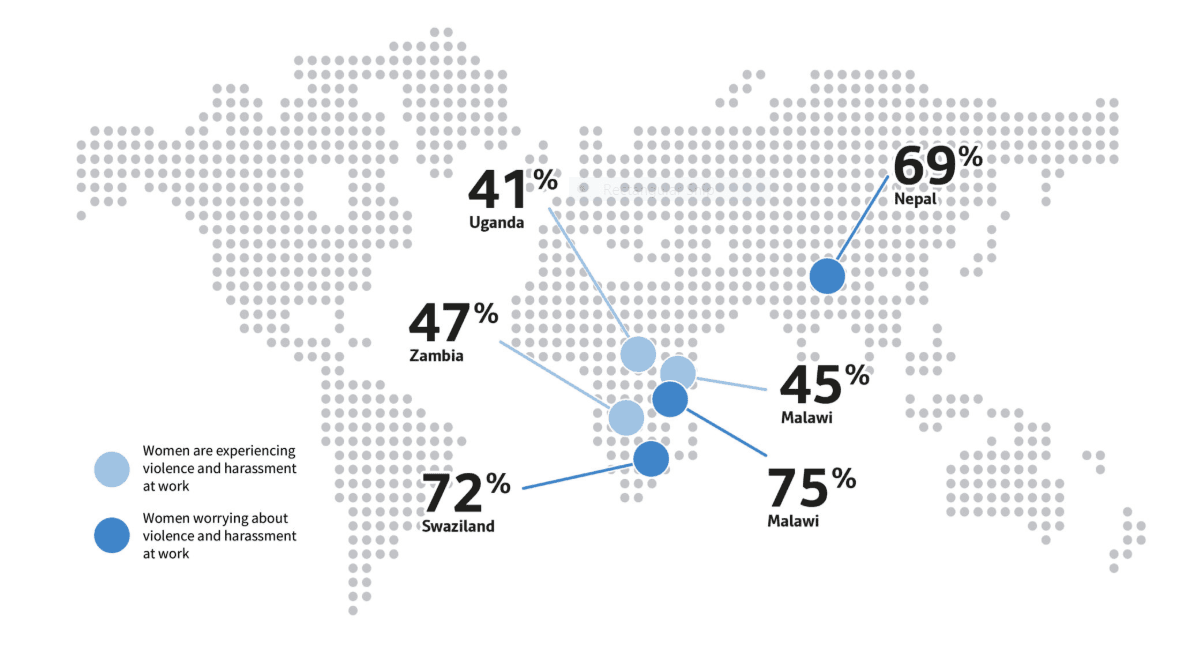Women in Malawi and Swaziland express the greatest levels of worry (75 per cent and 72 per cent respectively). Even in high-income economies where strong regulation of workplace safety is typical, significant concerns about violence and harassment were recorded in many countries, with figures ranging from just 3 per cent of female workers in Singapore to 42 per cent of Finnish female workers.
Globally, the World Risk Poll finds that nearly 11 per cent of female workers have experienced workplace violence and harassment, similar levels to men (12 per cent). However, the poll finds a significant gender gap in some countries with 39 per cent of female workers in Australia experiencing this issue compared to 24 per cent of men. Australia ranks sixth in the world for women experiencing violence and harassment in the workplace.






